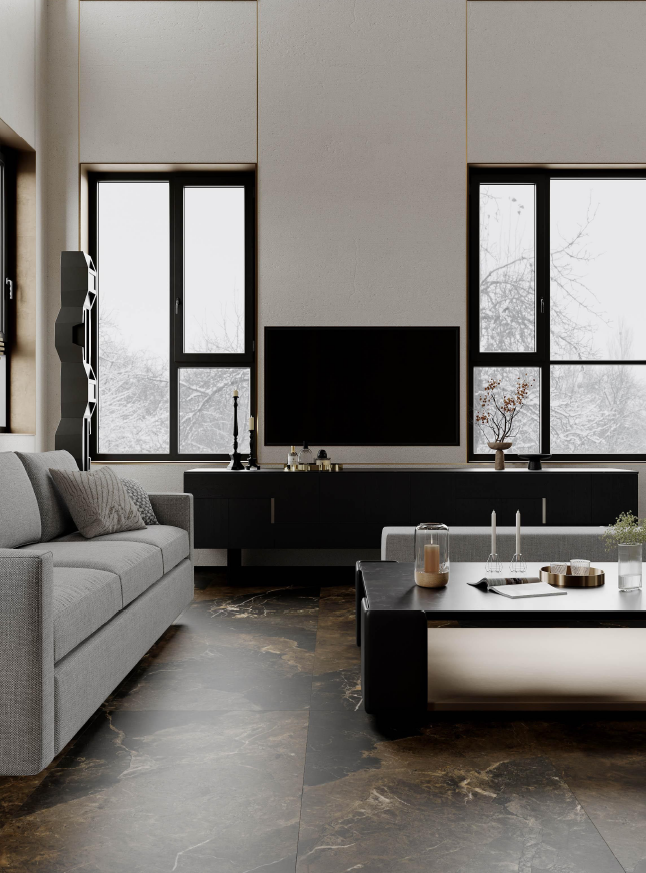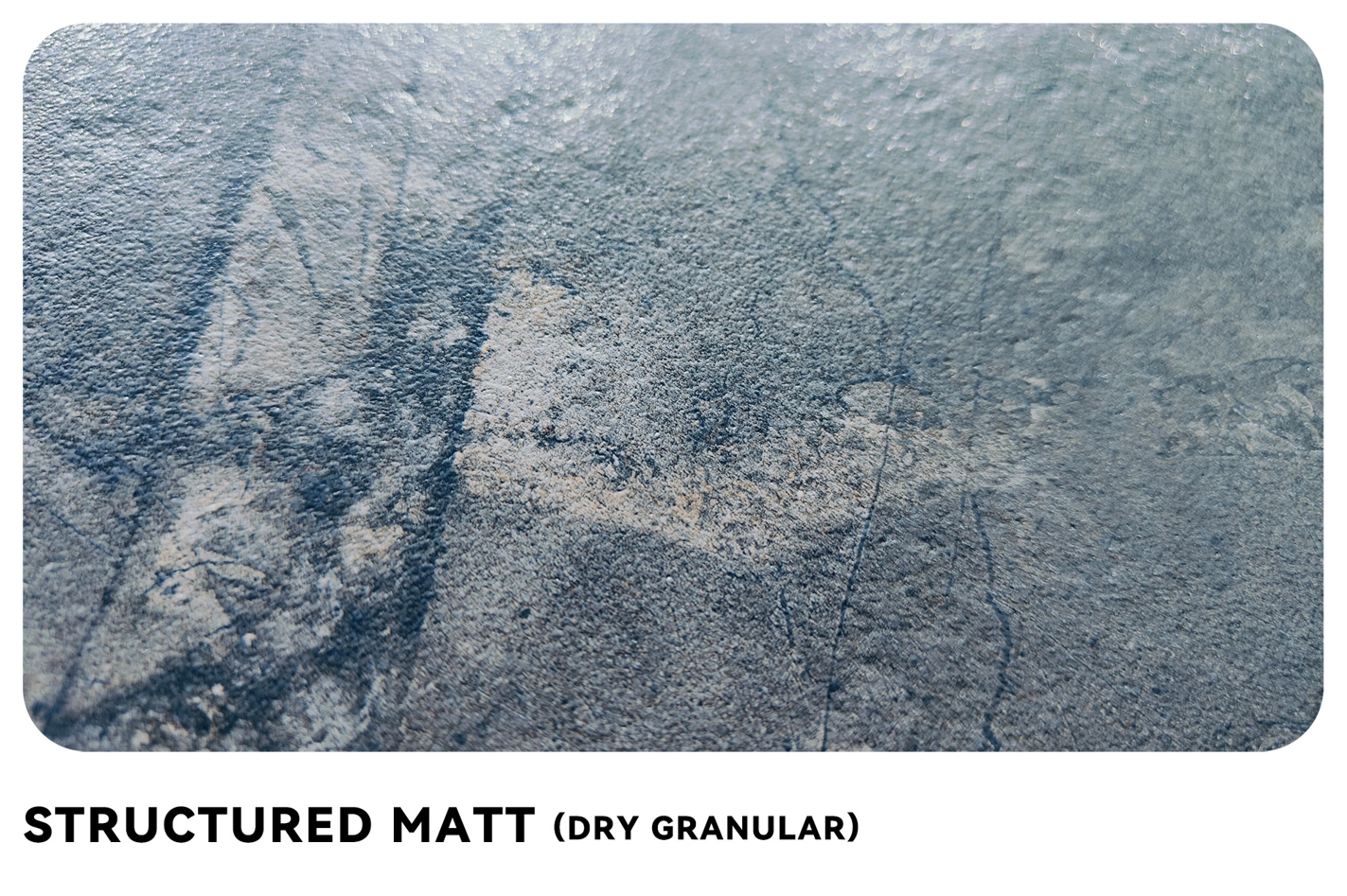Marble stone slabs, with their elegant texture, natural luster, and outstanding decorative effects, are widely used for flooring, walls, countertops, and stair treads.
However, despite their beauty and elegance, marble slabs are also very fragile. With improper use or care, they are prone to scratches, corrosion, tarnishing, and even cracking.

Many people ask: What exactly damages marble slabs?
To protect marble slabs, you must first understand their physical and chemical properties, identify the factors that cause damage, and learn how to prevent them. This article will provide a comprehensive analysis of the main causes, mechanisms, and mitigation strategies for marble stone slab damage from a professional perspective.
Why are marble slabs so vulnerable?
Before answering the question, "What damages marble slabs?", we need to understand their basic properties.
1. Marble's composition determines its sensitivity
Marble is primarily composed of calcium carbonate (CaCO₃) or dolomite (CaMg(CO₃)₂), a naturally occurring metamorphic rock.
While this mineral structure is dense and beautiful, it suffers from low chemical stability and a low hardness (approximately 3–4 on the Mohs scale).
This means:
• It is very sensitive to acids;
• It is easily scratched by hard objects;
• It is sensitive to humidity and temperature fluctuations.
These characteristics mean that marble requires meticulous care during use.
2. Marble is not "indestructible."
Many people mistakenly believe that stone is naturally strong and impervious to damage. However, compared to granite, marble has significantly lower physical strength.
Granite, primarily composed of quartz and feldspar, is wear-resistant and highly resistant to acids and alkalis. However, marble's calcium carbonate structure makes it susceptible to damage from acids, alkalis, heat, and mechanical stress.
Therefore, damage to marble is often caused by external chemical reactions, physical friction, or environmental factors.

What factors can damage marble slabs?
The following are several major factors that can damage marble stone slabs, each requiring special attention.
1. Acidic substances can corrode the marble surface
Marble slabs are most vulnerable to acidic liquids.
Because marble is primarily composed of calcium carbonate, it reacts chemically with acid, producing carbon dioxide and corroding it.
Common acidic substances include:
• Vinegar, lemon juice, and cola;
• Cleaners containing acidic ingredients;
• Certain fruit juices and alcoholic beverages;
• Cement or chemical residues.
Once an acidic substance comes into contact with a marble slab, the following symptoms may occur:
• The surface loses its luster and develops dull areas;
• Pitting or white spots appear;
• Long-term contact can even cause dents or pits.
Conclusion: Acidic liquids are the most common and destructive enemy of marble stone slabs.
2. Alkaline chemicals can also damage marble slabs
Many people know that acids can damage marble slabs, but they overlook the equally dangerous effects of strong alkaline substances.
Examples include bleach (NaClO), ammonia, and strong degreasers.
Alkaline substances react with the protective layer on the surface of marble stone slabs, causing discoloration, whitening, and even crystal loss.
Using alkaline cleaners on marble stone slabs for extended periods can damage the polished layer, causing the surface to lose its mirror-like finish.
3. Scratches and Friction
Marble slabs have a hardness of approximately 3–4 on the Mohs scale, while many everyday objects (such as sand, ceramics, and metals) have a much higher hardness.
Therefore, scratches are particularly likely to occur in the following situations:
• Sand and gravel from shoe soles;
• Dragging metal furniture;
• Using steel wool or abrasive cleaning pads to clean the surface;
• Direct contact of sharp objects with the countertop.
These micro-scratches not only affect appearance but can also become a reservoir for stains, making them difficult to remove over time.
4. High temperatures can cause marble slabs to expand and contract, or even crack
While marble slabs can withstand moderate heat, they are not resistant to high temperatures. Placing hot pots, kettles, or other high-temperature appliances directly on marble countertops can cause the following risks:
• Thermal expansion and contraction stress on the surface, leading to micro-cracks;
• Localized darkening and yellowing;
• Possible cracking in areas subjected to repeated heating.
Recommendation: Use a heat-insulating pad or tray to prevent direct contact of the marble stone slab with high temperatures.
5. Long-term erosion from moisture and water stains
Although marble is a stone material, it is not completely waterproof. Its microporous structure easily absorbs water.
Prolonged moisture on the surface can cause:
• Alkali bleaching and whitening within the stone;
• Darkening or water spots;
• Gradual breakdown of the protective layer, reducing its gloss.
In addition, marble slabs in kitchens and bathrooms are particularly susceptible to alkalinity or yellowing due to high humidity.
6. Improper cleaning methods
Improper cleaning methods are a common cause of marble stone slab damage.
For example:
• Using acidic or chlorine-containing cleaners;
• Using a stiff brush or rough rag;
• Frequent soaking or wet wiping.
These practices can inadvertently damage the surface structure of the marble slab. The correct approach is:
Use a pH-neutral stone cleaner and gently wipe with a soft cloth, then keep it dry.
7. Improper Installation or Structural Stress
Sometimes, cracking or breaking a marble stone slab is not due to improper use, but rather to construction and installation issues.
Common installation issues include:
• Uneven substrate, causing concentrated stress;
• Uneven thickness of the adhesive;
• Failure to provide expansion joints;
• Insufficient slab thickness.
These problems will gradually become apparent over time, ranging from fine lines to complete breakage.
8. Prolonged UV Exposure
Ultraviolet rays from sunlight can also damage marble slabs.
Some lighter-colored marble slabs containing organic mineral components can, after prolonged exposure to sunlight,:
• Yellow or fade;
• Loss of gloss;
• Surface oxidation, resulting in a dull layer.
Therefore, outdoor or sun-drenched areas should consider shading or regular protective treatment.

Why are marble slabs so sensitive to environmental changes?
1. Physical properties determine their inherent fragility
Although marble stone slabs are hard, their crystals are weakly bonded, resulting in natural internal veins and microcracks.
Changes in temperature and humidity cause the crystals to expand and contract slightly, creating internal stress concentrations.
2. Chemical instability of calcium carbonate
Calcium carbonate readily dissolves or reacts with acids, carbon dioxide, and water, making it more susceptible to degradation when used in humid, acidic environments.
3. Limitations of the surface protective layer
Marble slabs are often protected with wax, glaze, or penetrating protective agents. However, this protective layer is typically only tens of microns thick and easily damaged by chemicals, friction, or high temperatures.
How to prevent marble slabs from being damaged?
Now that we understand the causes of damage, scientific protection becomes key.
1. Proper Cleaning Methods
• Use a neutral detergent (pH approximately 7);
• Avoid using chemical cleaning products containing acids, chlorine, or ammonia;
• Dry the surface after each cleaning to prevent residual water stains;
• Apply stone care product monthly to strengthen the protective layer.
2. Physical Protection Measures
• For countertops, use anti-scratch and heat-insulating mats;
• For floors, place floor mats at entrances and exits to reduce abrasion;
• Before placing heavy objects, ensure they are cushioned to prevent impact.
3. Environmental Control
• Keep the room dry and well-ventilated, avoiding humidity;
• Avoid direct sunlight to reduce UV exposure;
• Manage extreme temperature fluctuations to prevent thermal expansion and contraction.
4. Regular Maintenance and Polishing
Professional polishing or glazing every 6–12 months can restore the luster and enhance protection. For high-traffic areas, maintenance cycles can be shortened.

FAQ
Does vinegar or lemon juice really damage marble slabs?
Yes. Acidic liquids react with the calcium carbonate in marble stone slabs, damaging the surface and leaving pitting, which is permanent damage.
Why does the surface of marble slabs become dark or lose its gloss?
This is usually caused by acid corrosion, friction, or damage to the protective layer. Re-polishing can restore some of the gloss.
What temperature can marble slabs withstand?
It is recommended not to exceed 80°C. High-temperature appliances should be avoided from direct contact with the surface.
Are cracks in marble floor slabs a quality issue?
Not necessarily. Cracks can also be caused by uneven subgrades or structural stress.
How can I prevent marble slabs from absorbing water and turning white?
You can use a penetrating protective agent to seal the pores and maintain a dry environment.
How does WOWSLAB ensure the eco-friendliness of its marble slabs?
WOWSLAB manufactures marble and sintered stone slabs with an eco-friendly approach, prioritizing sustainability and environmental standards. Our factory in China produces high-quality, durable slabs suitable for residential and commercial applications.
Buyers can enjoy wholesale purchasing, custom orders, low prices, and promotions. Our professional team guides clients through design, installation, and after-sales support. Purchasing from WOWSLAB means obtaining environmentally responsible, premium-quality stone products from a trusted supplier.


